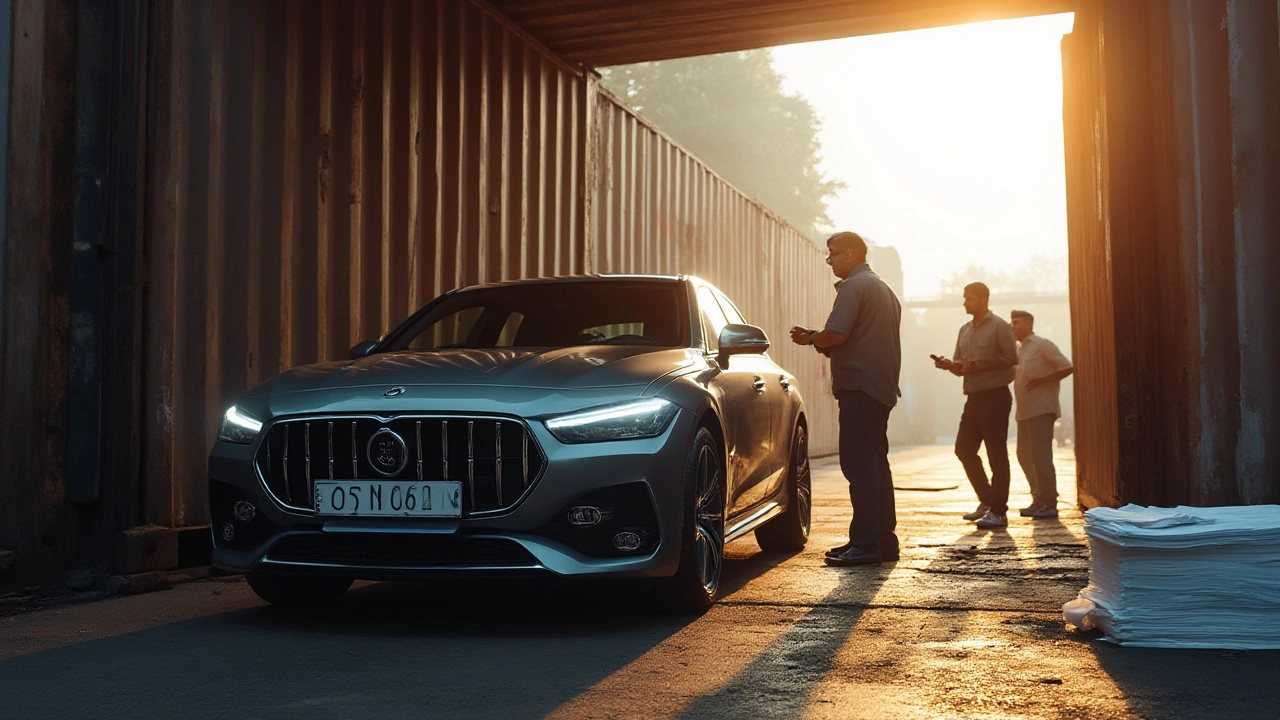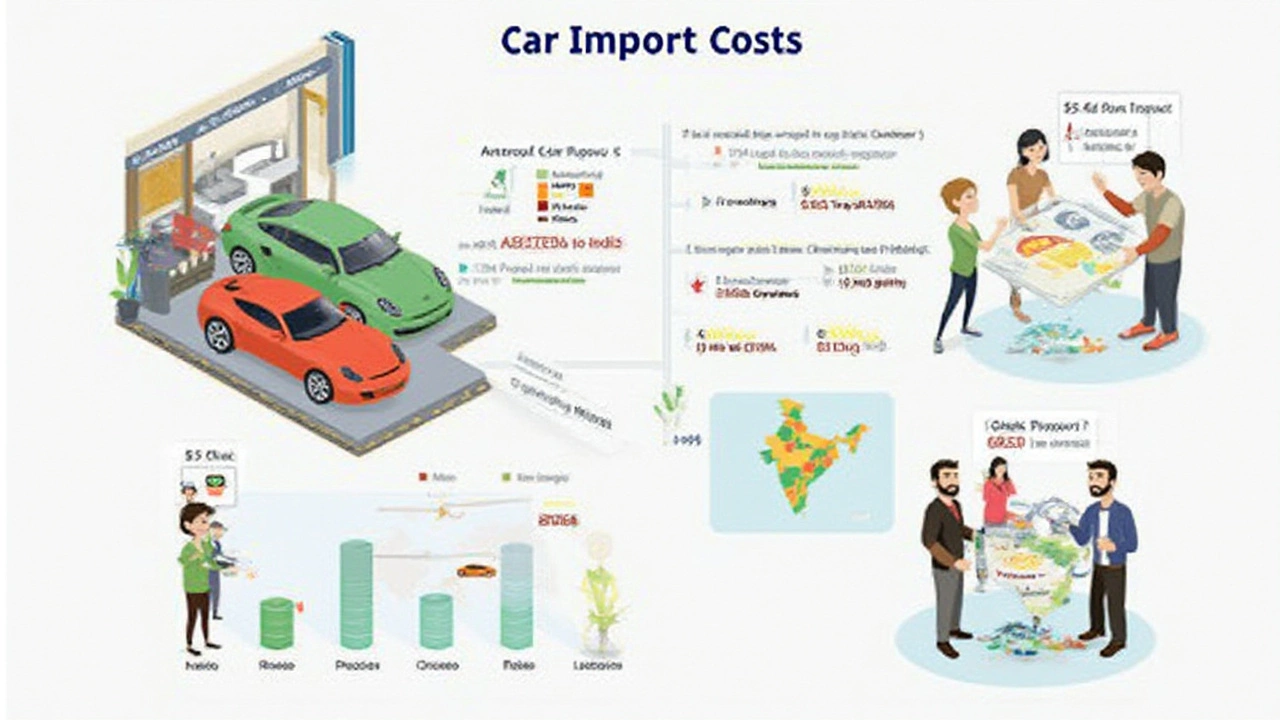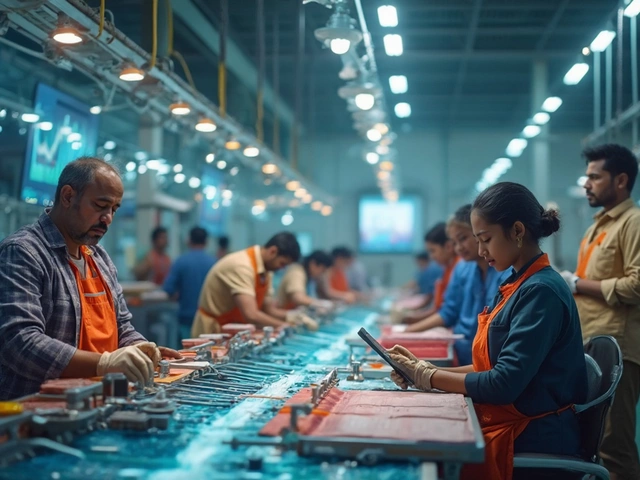Few things spark desire quite like that glossy foreign ride gliding down an Indian highway. You know the cars—the ones turning heads outside a Mumbai mall or pulling up at a Delhi hotel, with shapes and badges you rarely spot. Ever wondered if skipping the local showroom and directly importing your dream car could actually save you money in India? The answer’s surprising—and definitely not for the faint of heart or tight of wallet.
The Real Attraction: Why Do Indians Want to Import Cars?
Take a walk through any city and you’ll notice how local car options feel… predictable. Indian buyers have long craved something more—maybe a zippy Mazda from Japan, a punchy Mustang from Detroit, or that stylish Peugeot you saw on a Eurotrip. Local dealerships don’t always offer the latest models, wild engine variants, or exciting trims you see in international magazines. There’s also the cachet factor—a rare imported car sets you apart, a symbol that you aren’t part of the herd.
There’s also the tech aspect. Imported models sometimes debut tech years before Indian versions get them. We’re talking about upgraded safety features, hybrid or electric systems, even luxury updates. Loading up on these unique features, for some people, makes the hassle of importing feel justified.
Let’s not forget, some NRIs want to bring back cars they owned overseas, hoping for a slice of nostalgia paired with cutting-edge specs. And then there’s the classic collector’s angle. Many rare or vintage cars simply can’t be found in the local market.
The catch? India’s government isn’t thrilled about a flood of imported cars. The government wants to protect local manufacturers (Maruti, Tata, Mahindra, and so on), keep out high-emission vehicles, and plug tax revenue leaks.
What Does It Actually Cost to Import a Car to India?
On paper, importing a car might look simple: you buy overseas, pay to ship, pick it up at the port. Reality is messier, packed with hidden charges and regulations waiting to explode your budget. First, there’s the sticker price. But by the time your car rolls out of Indian Customs, its final cost might be double—or more—what you paid abroad.
The biggest shock? Indian car import tax. It’s no joke. Let’s look at the numbers for importing a new car (as of July 2025):
| Type | Tax Rate |
|---|---|
| Customs Duty on New Cars (Price < $40,000) | 100% |
| Customs Duty on High-End Cars (Price > $40,000) | 100-125% |
| Social Welfare Surcharge | Up to 10% |
| GST (Goods and Services Tax) | 28% |
| Compensation Cess (Luxury Cars/SUVs) | Up to 22% |
Here’s a quick example. Suppose you buy a vehicle in Germany for ₹30 lakh (about $36,000 U.S.):
- Car’s base price: ₹30,00,000
- Customs duty (100%): ₹30,00,000
- GST (28%): ₹8,40,000
- Cess (say 15%): ₹4,50,000
- Surcharge and port charges, registration, NOC: ₹1,20,000 (or more)
- Shipping (insurance, logistics, clearing): typically ₹1,50,000-₹4,00,000
Total? You could pay up to ₹75 lakh for a car that costs ₹30 lakh overseas.
Of course, certain exemptions used to exist for NRIs bringing a car back (especially if the car is over three years old), but those loopholes have mostly closed. Used-car imports are severely restricted (must be right-hand drive, less than three years old, and only through certain ports like Mumbai or Chennai). It’s a labyrinth, and one tiny paperwork error can double your headaches.
Some brands—BMW, Mercedes, Toyota—offer models as CBUs (Completely Built Units), but these face exactly the same high duties. The only way to escape the massive tax is to assemble the car in India (CKD: Completely Knocked Down kits), which is what most international carmakers now do.

The Import Process: Bureaucracy, Paperwork, and Wait Times
So, how does the process actually work for someone determined to bring a foreign car to India? First up, hope you love paperwork. The import process is heavy on forms, government approvals, and—let’s be honest—a bit of bureaucratic patience-testing.
- Choose the Right Car: Must be right-hand drive (steering on the right), speedometer in km/h, and comply with Indian emission rules (BS6 standard as of 2025).
- Get an Import License: Not optional. You need approvals from the Director General of Foreign Trade (DGFT).
- Order and Pay: Pay the overseas supplier and collect shipping, insurance, and customs documents.
- Shipping & Insurance: Secure marine insurance and arrange for your car to land at an approved port (Mumbai, Chennai, Kolkata, etc.).
- Customs & Homologation: Customs will check compliance. If your car doesn’t match Indian standards, it must go through homologation (serious testing, sometimes months-long).
- Pay Duties: Settle all taxes and surcharges before you even see your car.
- Roadworthiness Test: Checked by an official testing agency (like ARAI in Pune).
- Register Local RTO: Only after all of this and more, will your car get an Indian registration and plates.
Each step is loaded with paperwork, from bill of entry and invoices to test certificates and purchase documentation. Miss a single signature and you’re stuck. It's common to pay middlemen just to steer through the process—hardly surprising, given the mountain of red tape.
If you’re importing a classic or vintage car (more than 50 years old), some paperwork is lighter. Still, expect inspections and registration headaches. Car dealers, on the other hand, handle CBUs as a business, absorbing time and costs but passing both to you in the MRP.
Be ready for a wait, too. Even if your car ships in three weeks, it could be held up in customs or testing for months.
Is It Ever Cheaper to Import Compared to Buying Locally?
Here’s the honest answer: For almost every mainstream car, importing is far more expensive than buying the same or a similar model locally. You just can’t dodge those hefty taxes. For brands present in India (think Mercedes, BMW, Audi, Toyota), their India-assembled models are tweaked for local taxes, and even the CBUs are generally pricier than assembled versions.
But there are exceptions. Some car fanatics desperately want a model not officially sold here—like a high-performance Nissan GT-R variant, an American-market Ford Bronco, or limited-edition Teslas. There, money isn’t the point; exclusivity is. If your car’s value in India (because of scarcity or collectibility) will vastly outweigh the extra ₹20-50 lakh in taxes, it could make sense.
Some collectors try to import ultra-rare classics. If these cars fetch seven figures at auctions, the cost of taxes feels minor. The same holds for certain electric cars, especially if a unique model or battery tech isn’t sold domestically.
For most ordinary buyers, though, local models—especially those manufactured or assembled in India—are far cheaper and come with full dealer/warranty support, lower insurance, and easier servicing. Your imported car might even get stuck in a legal tangle down the road, especially as emission norms tighten each year.
Some friends consider bringing back a car from a stint working overseas. Be cautious—rules have gotten stricter, and unless it’s worth millions emotionally or in rarity, you’ll almost always spend more and struggle to sell if you change your mind later.
If you’re hunting for a deal, forget about grey channels. Smuggling or misdeclaring vehicles can land you in serious trouble, with cars seized and permanent blacklists from authorities.

Smart Tips for Importing a Car to India (If You Still Want To)
For those determined to navigate the import maze, there are tricks to at least soften the financial shock and speed up the process:
- Double-check your car’s eligibility—right-hand drive, valid emission norms, and speedometer in km/h are non-negotiable.
- Prepare all paperwork before your car even leaves the source country. Get documents in English and collect all invoices, ownership history, and emission test results.
- Research ports thoroughly. Mumbai and Chennai are the busiest, but Kolkata might be less crowded. Each works differently.
- Use a reliable customs-clearing agent. Their fees are high, but navigating the process solo is a nightmare.
- Review Real-World Examples. Chat with someone who’s done it recently, maybe on car forums or YouTube channels. People document every step (and pitfall); you’ll learn from their mistakes.
- Check total costs in advance, including shipping, potential fines, port fees, state registration surcharges, even insurance hikes for imported vehicles.
- Pay attention to future bans. Delhi and some other states have clamped down on high-emission or high-displacement engines; check if your import will soon be illegal to drive somewhere.
- Be wary of conversion kits (left-hand to right-hand drive). Customs will usually reject cars converted in India unless it’s done at the manufacturer.
One last thing: imported vehicles draw stares, but may struggle for spare parts and service backup. If it breaks down, you could wait months for simple components, or see eye-watering repair quotes.
If you care about being unique and have the money to burn, importing is your road less taken. Otherwise, for most car lovers, the answer is clear: buying locally—or choosing a foreign brand operating in India—will almost always make your life, and your wallet, a lot happier.





